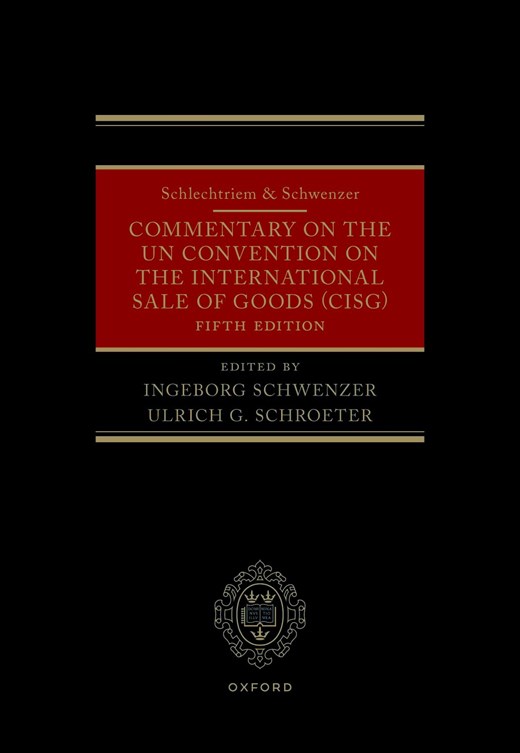 Schlechtriem & Schwenzer: Commentary on the UN Convention on the International Sale of Goods (CISG) (5th Edition)
Schlechtriem & Schwenzer: Commentary on the UN Convention on the International Sale of Goods (CISG) (5th Edition)
Contents
-
-
-
-
-
I. History I. History
-
II. General II. General
-
III. The Preamble in detail III. The Preamble in detail
-
1. New International Economic Order (paragraph 1) 1. New International Economic Order (paragraph 1)
-
2. Development of international trade (paragraph 2) 2. Development of international trade (paragraph 2)
-
3. Uniform rules to promote international trade (paragraph 3) 3. Uniform rules to promote international trade (paragraph 3)
-
-
-
-
-
-
-
-
-
-
-
-
-
Cite
Abstract
This chapter covers the preamble for the application of the CISG. The intentions of the drafters of the Preamble provide guidance in regard to the often difficult task to interpret the CISG in a manner promoting ‘good faith in international trade’ (Article 7(1)). An interpretation of the Convention’s rules under Article 7(1) must therefore ultimately lead to results which are in conformity with the intentions of their drafters and the spirit of the Convention as laid down and embodied in the Preamble. Whether the Preamble may also be of use for gap-filling under Article 7(2) for determining the general principles on which the Convention is based is disputed but, according to the chapter, is to be answered in the affirmative. Indeed, as the chapter shows, the CISG expressly provides that gaps are first of all to be filled by resorting to ‘the general principles on which it is based’.
Sign in
Personal account
- Sign in with email/username & password
- Get email alerts
- Save searches
- Purchase content
- Activate your purchase/trial code
- Add your ORCID iD
Purchase
Our books are available by subscription or purchase to libraries and institutions.
Purchasing information| Month: | Total Views: |
|---|---|
| August 2024 | 5 |
| September 2024 | 3 |
| October 2024 | 24 |
| November 2024 | 14 |
| December 2024 | 6 |
| January 2025 | 7 |
| February 2025 | 2 |
| March 2025 | 1 |
| April 2025 | 2 |
| May 2025 | 5 |


Get help with access
Institutional access
Access to content on Oxford Academic is often provided through institutional subscriptions and purchases. If you are a member of an institution with an active account, you may be able to access content in one of the following ways:
IP based access
Typically, access is provided across an institutional network to a range of IP addresses. This authentication occurs automatically, and it is not possible to sign out of an IP authenticated account.
Sign in through your institution
Choose this option to get remote access when outside your institution. Shibboleth/Open Athens technology is used to provide single sign-on between your institution’s website and Oxford Academic.
If your institution is not listed or you cannot sign in to your institution’s website, please contact your librarian or administrator.
Sign in with a library card
Enter your library card number to sign in. If you cannot sign in, please contact your librarian.
Society Members
Society member access to a journal is achieved in one of the following ways:
Sign in through society site
Many societies offer single sign-on between the society website and Oxford Academic. If you see ‘Sign in through society site’ in the sign in pane within a journal:
If you do not have a society account or have forgotten your username or password, please contact your society.
Sign in using a personal account
Some societies use Oxford Academic personal accounts to provide access to their members. See below.
Personal account
A personal account can be used to get email alerts, save searches, purchase content, and activate subscriptions.
Some societies use Oxford Academic personal accounts to provide access to their members.
Viewing your signed in accounts
Click the account icon in the top right to:
Signed in but can't access content
Oxford Academic is home to a wide variety of products. The institutional subscription may not cover the content that you are trying to access. If you believe you should have access to that content, please contact your librarian.
Institutional account management
For librarians and administrators, your personal account also provides access to institutional account management. Here you will find options to view and activate subscriptions, manage institutional settings and access options, access usage statistics, and more.